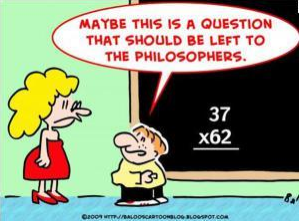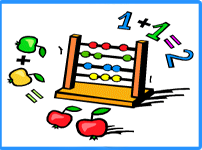Science Seen Physicist and Time One author Colin Gillespie helps you understand your world.
Taking Lessons from the Universe
Arithmetic is fundamental to science; but we tend to take it for granted. Few realize its foundations are shaky. Now there are exciting ways to firm them up.
We are sold a knowledge pyramid like this: Sciences rest on a foundation of physics; physics on math; math on arithmetic. And arithmetic on logic— but, actually, not!
Talented logicians have indeed set out to put arithmetic on a logical foundation, including Gottlob Frege and Guiseppe Peano who more or less invented the field in the late 1800s and Alfred North Whitehead and Bertrand Russell who boldly set out in 1910 to systematize it in their epic Principia Mathematica. All such efforts failed. In the land of logic, arithmetic is still an orphan child.
Why should this matter to us? Why does mathematics work at all? Some, especially those of the realist school of mathematical philosophy, say that the reason is arithmetic connects closely with reality. Indeed, while the many branches of mathematical philosophy disagree on lengthy lists of propositions, most of them agree that numbers must be about counting real things.
 Philosopher of mathematics Hilary Putnam (in 1975, crediting Willard Quine) puts it this way: ‘Quantification over mathematical entities is indispensable for science, both formal and physical; therefore we should accept such quantification; but this commits us to accepting the existence of the mathematical entities in question.’
Philosopher of mathematics Hilary Putnam (in 1975, crediting Willard Quine) puts it this way: ‘Quantification over mathematical entities is indispensable for science, both formal and physical; therefore we should accept such quantification; but this commits us to accepting the existence of the mathematical entities in question.’
Which, as I said, says numbers must count real things.
What things then are we to count? Philosophers are fond of odd things such as apples. But these have their problems when you get up close. Is that moldy object in the compost still an apple; or is that small bud on a stem at twig-end now an apple—that was only blossom just a day ago?
This is where the universe steps up to the arithmetic plate! Readers will know the long and reputable history of the concept that at the Planck scale space is made of tiny indivisible quanta, or flecks. And also they have seen more recent work that shows how energy and matter may be made of twists between the flecks of space. In other words, everything is made of flecks and so flecks are all there is.
This is a digital view of the universe. It says that its numbers are integers: 1, 2, 3; not fractions like ½; and surely not so-called real numbers like π, or 3.14159… ad infinitum. It says its arithmetic is simple and is of the kind that one does on one’s fingers. What can we learn from this new view?
First, there is no need to count uncertain objects like apples. Philosophers of math should number flecks instead. That flecks are too small to see should not deter them. To meet Putnam’s Rx we don’t need to see them, it’s enough that they exist.
 And philosophers can ask: How does the universe do math? Readers will by now be more or less familiar with a Planck-scale picture of the way the universe began. It all starts with a single fleck. It is unstable. So it replicates. So here is what happens, in the language of arithmetic: 1 + 1 = 2.
And philosophers can ask: How does the universe do math? Readers will by now be more or less familiar with a Planck-scale picture of the way the universe began. It all starts with a single fleck. It is unstable. So it replicates. So here is what happens, in the language of arithmetic: 1 + 1 = 2.
At the next step—the next tock of the cosmic clock as the narrator in Time One would have it—both of these two replicate: 2 × 2 = 4. Und so weiter, as Frege would have said, delighted to find that the universe itself supplied him with a truly fundamental source of axioms.
Modern philosophers of mathematics, who of late have found slim pickings in the wake of Quine and Putnam, will find new horizons here. For example, it becomes clear that (to the deep relief of theoretical physicists) there are there no infinities in this universe. And the first theorem of number theory, that there is no largest natural number, is demonstrably wrong if Planck-scale physics is now on the right track. Gödel’s incompleteness theorems—the stunning development of mathematical logic that in 1931 brought efforts like Whitehead-and-Russell’s to a shuddering stop—relies (as did Peano’s work before them) on an object, namely zero, that does not exist. There is opportunity for thousands of PhD theses and shelves full of heavy books.
Will the philosophy of mathematics gain new life? Of course. The question is: How fast?
Sources:
Hilary Putnam (1975), Mathematics Matter and Method, Cambridge: Cambridge University Press, Philosophical Papers, vol. I, p. 347.
Image credits: British International School, Phuket, https://ibmathsresources.com/2013/03/26/the-philosophy-of-mathematics/; ShibSubhdra Public School, http://sspsrajounedu.com/Scheme_Studies.aspx

No comments yet.